
by Michelle Dwyer | Mar 16, 2014 | Blog, Health, Nutrition
You may have heard about the benefits of an alkalizing diet, but maybe you didn’t exactly know what that meant, why it was important, or how to achieve it. Or maybe you just thought acid and alkaline were words from your tenth grade chemistry class. Hopefully this post will take a bit of the mystery out of the effects of acid or alkaline foods on our bodies.
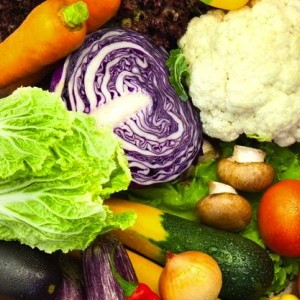 We all know that eating foods rich in vitamins, minerals, antioxidants, phytonutrients, and fiber is good for our bodies. We also know to look for whole food sources of grains and complex carbohydrates, healthy fats, and quality proteins. And since we are all biochemically different and have different needs at different stages of our life, what kinds or foods and how much will differ from person to person. All of this is really about balance—eating a variety of foods, in a rainbow of colors, to achieve balance in our bodies. Examining the acid-alkaline balance of our foods in just another tool to help us achieve this goal.
We all know that eating foods rich in vitamins, minerals, antioxidants, phytonutrients, and fiber is good for our bodies. We also know to look for whole food sources of grains and complex carbohydrates, healthy fats, and quality proteins. And since we are all biochemically different and have different needs at different stages of our life, what kinds or foods and how much will differ from person to person. All of this is really about balance—eating a variety of foods, in a rainbow of colors, to achieve balance in our bodies. Examining the acid-alkaline balance of our foods in just another tool to help us achieve this goal.
Our body tissues and blood are slightly alkaline. Stressors—in the form of infections, pollution, improper digestion, and a diet high in acidic foods—can all lead to more acid in the body (Haas, 2006). According to The Joy of Food: The Alkaline Way (2008-2009), too much acid in the body is harmful because “the body links these excess acids with alkaline minerals . . . and excretes them. Over time, this can deplete the body of needed minerals and lead to a build-up of excess acids in your cells. This reduces the efficiency and effectiveness of your cells and tissues” (p. 5). In order to counteract and prevent this build-up of acid from occurring in our cells, it is beneficial to include more alkaline foods in our diet.
The body needs the acid-buffering minerals of potassium, calcium and magnesium in order to keep our bodies at a balanced pH (Jaffe and Donovan in The Joy of Food: The Alkaline Way, 2008-2009, p. 15). Our bodies function best in an alkaline environment, and we need these mineral-buffering reserves from an alkaline diet to help us counteract the effects of acid in our bodies: “A diet that is predominantly alkaline forming is essential to the maintenance of sustained health” (p. 15). So what does this mean? What foods are alkaline or acid?
 When looking at whether a food is considered alkaline or acidic, we are looking at how the food metabolizes in the body. For example, although lemon juice itself is acidic, it becomes alkalizing once it is metabolized by the body. Cow’s milk, on the other hand, is alkaline itself but becomes acidic in the body. Sound a little confusing? It can be at first but one thing that helps a lot is a chart that lists alkaline and acidic foods. There are many available on the Internet but I like this one created by Dr. Russell Jaffe, one of the leaders in looking at the role of acid in our bodies, on Dr. Liz Lipski’s website.
When looking at whether a food is considered alkaline or acidic, we are looking at how the food metabolizes in the body. For example, although lemon juice itself is acidic, it becomes alkalizing once it is metabolized by the body. Cow’s milk, on the other hand, is alkaline itself but becomes acidic in the body. Sound a little confusing? It can be at first but one thing that helps a lot is a chart that lists alkaline and acidic foods. There are many available on the Internet but I like this one created by Dr. Russell Jaffe, one of the leaders in looking at the role of acid in our bodies, on Dr. Liz Lipski’s website.
In general, fresh fruits and vegetables tend to be alkaline. There are a few exceptions like tomatoes, plums, cranberries, figs and carrots. Acidic foods are meats, eggs, beans, and dairy. It is especially important to pay attention to the fact that processed foods full of refined flour and sugar, hydrogenated oils, and salt are all acidic.
Does this mean we need to completely avoid all acidic foods? No, not all of them—eggs, beans, carrots, and tomatoes are all part of a healthy diet, but they need to be in balance with more alkaline foods. The most important step we can take to reduce the acid in our bodies is to avoid processed and refined foods. Elson Haas (2006), a leader in integrated healthcare and nutrition, suggests that a diet that is about 70% alkaline foods will “keep the system functioning optimally, provided we get the balance of vitamins and minerals we need, as well as the essential fatty and amino acids to perform the required fat and protein functions” (p. 394-95). The Joy of Food: The Alkaline Way (2008-2009) recommends that 80% of foods be alkaline for health restoration and 60% alkaline for maintaining health (p. 7).
Here are some easy ways to alkalinize your system:
- Add the juice of lemon, lime or raw apple cider vinegar to 4-6 ounces of water and drink before or with meals
- Add lentils, ginger, yams or sweet potatoes to your diet
- Aim to eat at least two cups of greens a day, like kale, collards, turnip greens, or endive
- Add seaweeds and kelp to your diet. You can eat these as roasted seaweed snacks or add kombu to soups (also helps with digesting beans)
- Drink Kona coffee instead of regular coffee. Kona coffee is still acidic but less so than other coffee beans
- Use ghee instead of butter
What you do NOT need to do is invest any money in alkaline water. For a clear explanation of why you do not need alkaline water, read Dr. Weil’s response here.
What questions do you have about acid/alkaline balance?
References
Haas, E. M. (2006). Staying Healthy with Nutrition. Berkeley, CA: Celestial Arts.
The Joy of Food: The Alkaline Way [Pamphlet]. (2008-2009). RMJ Holdings.
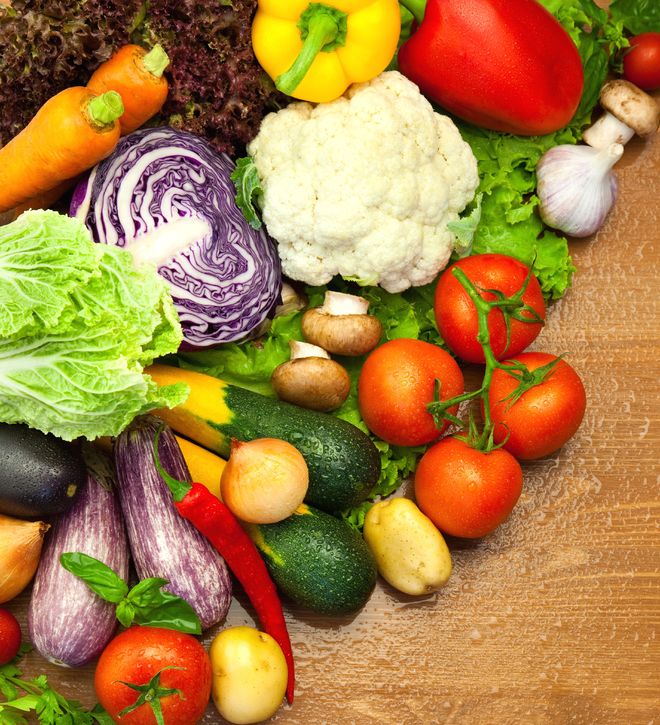
by Michelle Dwyer | Feb 13, 2014 | Blog, Nutrition, Vegetarian/vegan
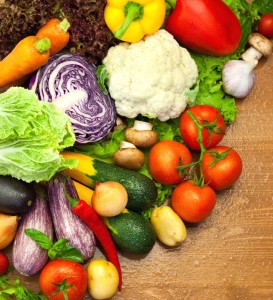 What does “plant-based” mean to me?
What does “plant-based” mean to me?
I love the term plant-based because it seems a lot more inclusive. Plant-based can run the gamut from vegan to vegetarian to pescatarian to flexitarian to someone who eats animal products occasionally. The focus is on an eating plan based on eating mostly plants. I know many people who are very committed to their vegetarian or vegan eating plans and that works great for them. I also know other people who eat a mostly vegetarian diet but may occasionally eat some animal meat. Are they vegetarian? No, technically not. Are they plant-based? I would say so. Plant-based also implies a diet of mostly whole foods that come from plants like vegetables, fruits, whole grains, legumes, nuts and seeds. Lastly, plant-based acknowledges the nutritional and health benefits of eating mostly plants. Michael Pollan’s suggestion comes to mind here: “Eat food. Mostly plants. Not too much.”
What are some of the benefits of a plant-based diet?
A well-planned, nourishing plant-based diet can have many benefits, including:
1. Less impact on the planet. When we eat mostly plants, especially organic, locally grown, seasonal ones, we are making a powerful positive impact on our planet.
2. Fiber! Eating a healthy plant-based diet often means getting much more fiber in your diet which is better for your overall colon health. Not only does fiber help with regularity, but beneficial bacteria in our digestive system need the fiber as well, so a healthy gut comes from getting at least 30 grams of fiber a day. I actually like it if people can get even more.
3. A plant-based diet has been linked to many health benefits, including decreased risk of heart disease, diabetes and certain kinds of cancer.
4. Let’s talk about dairy. Many people are either lactose intolerant or have a dairy sensitivity to the proteins found in cow’s milk. For many people, dairy can be very inflammatory or can cause digestive upset like gas, bloating, diarrhea or constipation. Going off dairy can be a great step towards relieving a lot of these problems for many people.
5. More vegetables! If a person is eating a whole foods diet full of vegetables, then they are going to get all the wonderful benefits including increased fiber, phytonutrients, antioxidants, vitamins and minerals. I suggest people make at least half their plate vegetables, no matter if they are vegan, paleo, or anything else!
I will say that eating plant-based requires careful thought and planning. Someone could be vegan and eat all junk food, so it is important to look at what you eating. My suggestions include eating mostly whole foods–foods found in the natural state. In particular, I also suggest avoiding eating processed soy, especially soy protein isolate, which also can be very inflammatory. Instead, if you body is okay on soy, stick to mostly fermented soy products like tempeh and miso. Lastly, since we all have individual needs, it is important to see what works best for your body. For example, someone may have difficulty digesting certain carbohydrates or may require more protein. The key is adjusting your eating plan to your current dietary needs. (Having trouble figuring out what that is? Schedule a session with me and we can figure that out together!)
Lastly, want to incorporate a few more plant-based recipes into your week? Check out a few of my favorite plant-based websites!
http://101cookbooks.com/
http://www.theppk.com/blog/
http://www.vegkitchen.com/kid-friendly-recipes/
http://www.vrg.org/teen/
http://veganyumyum.com/
http://www.nomeatathlete.com/vegetarian-protein/
http://happyherbivore.com/recipes/
http://www.pcrm.org/health/diets/pplate/power-plate
http://well.blogs.nytimes.com/2013/01/14/how-to-go-vegan/
http://oaklandveg.com/resources/recipes/
http://www.dentalcarealliance.net/easy-and-healthy-vegan-recipes/
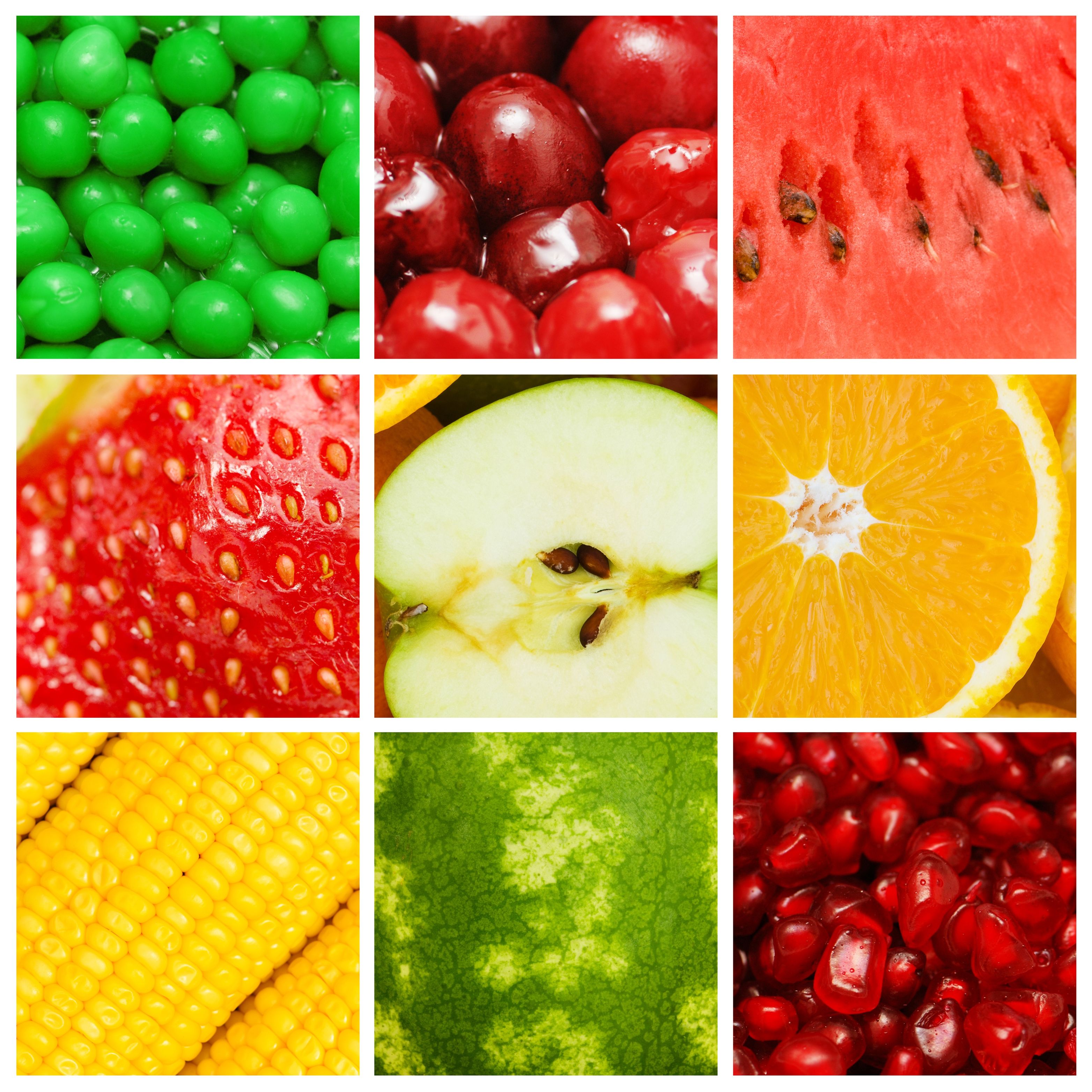
by Michelle Dwyer | Jan 28, 2014 | Blog, Health, Nutrition
What is organic farming?
Organic farming refers to the “production of food without the use of chemical additives or preservatives” (Margel, 2005, p. 34). Organic farming practices can include age-old practices like returning nutrients to the soil through compost, allowing the field to remain fallow, winter cropping of nutrient-rich plants, using seaweeds and other natural fertilizers, using natural enemies for pest control, planting a diversity of crops rather than monoculture, creating mixed farms with crops and livestock, and working with the natural cycles of nature (p. 34-35). Organic farms work in close relationship with the land to yield produce in healthier ways—for the workers, the soil and the consumers.
 What are some of the benefits of eating organically grown food?
What are some of the benefits of eating organically grown food?
Some of the benefits of organic foods includes reducing exposure to harmful chemicals and “health robbing toxins,” increasing consumption of health-promoting micronutrients, safeguarding children’s health, and protecting the health of the environment (Murray, Pizzorno J. and Pizzorno L., 2005, p. 51-52). In the United states alone, “more than 1.2 billion pounds of pesticides and herbicides are sprayed on or added to our crops” and these chemicals are then absorbed into the air, water, soil and food supply (p. 47). There are many long-term health risks associated with pesticide exposure including cancer and birth defects (p. 47).
Why I personally buy organic foods:
When I personally think about buying organic, I feel the “investment” is worth it because there are so many benefits:
- The people who work the land are not exposed to harmful chemicals.
- These poisons will not end up in the water supply to contaminate not only our drinking water, but habitats for animal and plant species.
- The toxins will not end up built in my body from years of ingestion and exposure.
- Lastly, I am supporting with my dollar a set of values that honor the planet and its people.
Some general tips if you cannot always buy organic:
- Check out the Environmental Working Group’s page of the Clean 15 and the Dirty Dozen at http://www.ewg.org/foodnews. These are the 15 vegetables and fruits that are least contaminated and 12 that are most contaminated. A great resource with an available app for your phone!
- With corn and soy food products, I always recommend getting organic since these two are also the most often genetically modified. Until more research is done on the effects, I recommend avoiding genetically modified foods.
- Keep in mind that means also purchasing organic meat and dairy products since often the feed given to conventionally raised animals is genetically modified corn, soybeans and other grains.
- Since children are more susceptible to the build up of toxins and pesticide safety is not tested for humans their size, I strongly recommend that most of the food products you purchase for your children be organic.
What questions do you have about purchasing organic produce?
References
EWG’s Shopper’s Guide to Pesticides in Produce. (n.d.). Retrieved March 10, 2012, from Environmental Working Group website: http://www.ewg.org/foodnews/summary/
Margel, D. L. (2005). The Nutrient-Dense Eating Plan. Laguna Beach, CA: Basic Health Publications.
Murray, M. T., Pizzorno, J. E., & Pizzorno, L. (2005). The Encyclopedia of Healing Foods. New York: Atria.

by Michelle Dwyer | Sep 3, 2013 | Blog, Guest blog, Health, Nutrition
by Julie Bailis
First of all, I have never been one for diets. I have always been athletic and thankfully, have never really had to watch what I ate in order to maintain my weight. As a young adult, I generally ate well, occasionally drank too much or OD’ed on ice cream, but never really thought too much about my diet.
It was the birth of my son that forced me to really think about what we were eating. He was diagnosed with multiple food allergies at age 1. Although, his multiple food allergies were somewhat of a mixed blessing. Yes, it was difficult managing his allergies (have you ever tried making a gluten-free, soy-free, egg-free, birthday cake? I have and mine sucked). However, it was the first time in my life that I began reading ingredients lists and making food from scratch. We were never really junk-food junkies, but his allergies had turned me into a “whole foods cook”…good stuff.
Fast forward 7 years. I had been eating well (or so I thought) and exercising my butt off. After two kids and 7 years of mothering, I decided that it was time to get my body back in shape. I got back to climbing, yoga and even started CrossFitting. I felt great, but still looked in the mirror and was bothered by my stinkin’ spare tire! It just didn’t look right! It didn’t make sense! I exercised plenty, but that dang spare tire just wouldn’t go away. On top of all that, my energy level was not steady. After 1 pm, my energy level would just plummet and I would just want to take a nap. It just didn’t feel right.
 Shortly after starting Crossfit I learned about the Whole Life Challenge. My gym and many of its members were participating in this lifestyle challenge and it sounded interesting. Hey, I’m always up for new things. So, I signed up. Below is a little summary about my own experience with it during the Fall of 2012. There were food and lifestyle challenges (see below) and we got points for all of these activities and could even earn bonus points if we did extra things (i.e. post a comment on the leaderboard every day or participate in the weekly challenge that week). One week our challenge was to get 8 hours of sleep everyday. SWEET.
Shortly after starting Crossfit I learned about the Whole Life Challenge. My gym and many of its members were participating in this lifestyle challenge and it sounded interesting. Hey, I’m always up for new things. So, I signed up. Below is a little summary about my own experience with it during the Fall of 2012. There were food and lifestyle challenges (see below) and we got points for all of these activities and could even earn bonus points if we did extra things (i.e. post a comment on the leaderboard every day or participate in the weekly challenge that week). One week our challenge was to get 8 hours of sleep everyday. SWEET.
The food challenge aspect went a little something like this:
I could eat:
- meat
- nuts
- vegetables
- fruit
- WHOLE FOODS PEOPLE!!
- NO grains
- NO sugar
- NO artificial ingredients
The lifestyle challenge went like this:
- We had to exercise for at least 10 minutes a day
- We had to mobilize (or stretch) for at least 10 minutes a day
- We had to take a fish oil supplement every day.
Nuff said.
Things I noticed early on:
- The first thing I noticed that starting on the first day of the challenge, my energy level was steady Freddy! Seriously, I didn’t hit “that wall”. That wall, that has you immobile on the couch and/or making your 3rd cup of coffee of the day. I just never hit that wall. It was awesome and that was incentive enough to keep going with the challenge.
- After the first week, no joke, my spare tire had shrunk, seriously, shrunk. By the end of the 8 weeks, clothes fit me differently, and this summer I actually wore a bikini to the pool and felt pretty dang good about it (thank you very much)!
Things I learned:
- I learned that I ate a lot of my meals standing up. Shoving food in my face without thinking because I was too busy putting kids lunches together or cleaning the kitchen. Food was shoved and not enjoyed. Not good.
- I learned that I nibbled on my kids lunches as I packed them. I promptly stopped that once the challenge began because, “Mama wasn’t going to lose no points to rice crackers, no Ma’am.” I was going to win or so I thought :). Besides, I’d rather use any bonus points I had earned on a glass of wine with my hubby on a Friday night and not waste them on stale bits of rice cake.
- I learned that I didn’t really need a glass of red wine everyday and that saving my glass of wine for Friday night helped me really savor its flavor.
- I learned that crappy coffee sucks when you can’t mask it with cream or sugar. I now am officially a coffee snob. No cheap coffee date here.
- I learned how to be a better, more creative cook. Having inspiring cookbooks full of “food porn” helped though. I will wholeheartedly recommend, Everyday Paleo and Eat Like a Dinosaur: Recipe & Guidebook for Gluten-free Kids.
- I learned that my own body works much better without dairy and wheat. I was less bloated and had more energy. I know some people can tolerate dairy and wheat well, but I quickly realized that I did not. I have been mostly dairy and grain-free for about a year now and I feel so much better for it.
Things I loved:
- I loved the structure and accountability the challenge offered me. I quickly got into the habit of logging my points in on the website every day. I looked forward to reading other members’ comments and thought hard about what comments I would make.
- I loved the “forced reflections”. It’s not mandatory that you post a comment everyday, but it is highly encouraged and if you do it for a week, you will earn a bonus point or two. The comments really made me think about my own progress and how I felt about it all. It really enriched the experience for me. However, if you aren’t one for reflection, you don’t have to; so don’t worry about it!
Challenges:
The hardest part for me was explaining to other people what I was doing. I dreaded going to parties and explaining my food restrictions. I would often get a lot of comments like, “Why are you on a diet? You’re not fat!” or “What’s Paleo? Is it like Atkins? No carbs, right?” At first, all of the questions annoyed me and I didn’t want to let anyone know about the WLC. Then, I decided that I would think about it as an opportunity to educate, not preach, but educate. I would tell the curious person about the challenge, but most importantly, I would tell them about my own experiences and how much better I felt living without dairy and grains. How I had more energy and slept better. My defensiveness to their curiosity turned in to genuine conversation. That can be hard to come by at a party sometimes!
Surprises:
In the end, I was pleasantly surprised with the fact that the challenge was about so much more than food and exercise. It was about living. Living mindfully and living fully. It really wasn’t about winning at all, even though I really, really wanted to :). It was about feeling better, looking better, and having the energy to do the things that I love.
I plan on participating in the Whole Life Challenge again this fall because I look forward to the community, the new recipes, and maybe even some new insights into my most recent lifestyle choices.
If you plan on participating in The Whole Life Challenge this year, good luck to you, and chances are you will not be disappointed!
Written by Julie Bailis, a Registered Yoga Teacher, Crossfitter, rock climber, foodie, and lover of life. Learn more about her at www.yogawithjulieb.com.
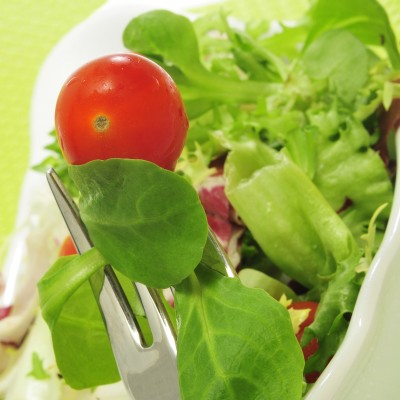
by Michelle Dwyer | Jul 18, 2013 | Blog, Health, Nutrition, Recipes, Vegetarian/vegan
Summertime is a great season to be enjoying all the fresh fruits and vegetables at the markets. Because it is usually hot, summer is also a great time to eat foods like fresh vegetables and fruits that are both cooling and hydrating. Salads can be great way to eat these, but how do you eat and prepare salads if you are on the go?
Well, I have to share one of favorite lunch ideas, and really, this is one I just can’t stop sharing! Have you heard of salad-in-a-jar? The basic concept is to make your salads ahead of time to save time in the week, but the idea is to use a mason jar to keep the contents separate until you are ready to mix them together. The dressing goes on the bottom and the greens on very top to keep them from getting wilted and wet. Brilliant!
You can really be creative with this idea, but my favorite recipes to get started are found on this great recipe blog called The Yummy Life by Monica Matheny. I love that she starts with cooked quinoa at the base, so you get some great protein and fiber in your salad and the salad dressing gets soaked up there. The recipes are also all gluten-free and vegan. Lastly, not only are the recipes yummy and varied, but she also has some excellent preparation tips.
Take this concept and run with it! The variations and possibilities are endless. You could use brown rice instead of quinoa or no grain at all. What some meat in there?—Then add some grilled organic chicken or smoked wild salmon. I also like to vary the nuts I add to my salads, so one day it will be walnuts and another pistachios. The vegetable choices are endless—green beans, celery, carrots, shredded beets—you name it! You could even add some seasonally fruit like berries or peaches for some added flavor. Lastly, I love that you can make these ahead of time and be ready to grab and go the rest of the week!
Give it a try and let me know what you think!
And for other salad-in-jar inspirations, check out the following:
http://backtoherroots.com/2013/04/09/salad-in-a-jar-101/
http://www.salad-in-a-jar.com/how-to-make-salad-in-a-jar-2
http://kblog.lunchboxbunch.com/2012/06/vegan-salad-in-jar-make-ahead-bliss.html
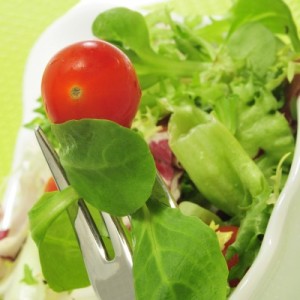

by Michelle Dwyer | Jul 10, 2013 | Blog, Health, Nutrition, Recipes, Vegetarian/vegan
You may be seeing many fresh herbs at your farmers’ market, local store, or even in your own garden and be wondering what to do with them. Herbs are such an easy way to add not only fresh flavor and taste to your recipe, but they are also packed with nutrition.
Three things I really love about fresh herbs are . . .
- Fresh herbs are VERY nutritious, providing valuable phytonutrients, antioxidants, and anti-inflammatory compounds that both aid digestion and add great flavor!
- They are very EASY to add to any dish from homemade recipes to canned soup!
- Also, most herbs are very easy to grow, even in a small space. Then you can just pinch off or cut what you need. Indeed, this is the FRESHEST way to have your herbs!
Did you know that parsley is a great source of vitamin C? Or that rosemary and dill are great for grilled foods because of their anti-carcinogenic effects? Herbs have many healthful effects on our bodies and they taste great too!
Here are three great recipes highlighting herbs:
Orange, Radicchio and Oregano Salad
Ginger-Rosemary Lemon Drop Cocktails
And from the Post Punk Kitchen, a delicious chimichurri sauce that is great on meats, tempeh or tofu, and grilled vegetables!
Ingredients:
- 4 cloves garlic
- 1 cup loosely packed fresh cilantro
- 1 cup loosely packed fresh parsley
- 1 tablespoon of fresh oregano (or 1 t. dried)
- 1/4 cup red wine vinegar
- 2 tablespoons olive oil
- 1/2 teaspoon red pepper flakes
- 1/2 teaspoon salt
- 3/4 cup veg broth
Directions: Simply blend all of the sauce ingredients in a food processor until relatively smooth. Use as a marinade and sauce! Can also use basil, dill or mint as the fresh herbs.
Enjoy and let me know your favorite ways to fresh herbs in your cooking!
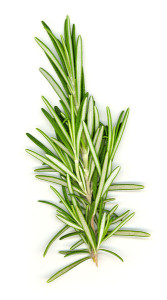

 We all know that eating foods rich in vitamins, minerals, antioxidants, phytonutrients, and fiber is good for our bodies. We also know to look for whole food sources of grains and complex carbohydrates, healthy fats, and quality proteins. And since we are all biochemically different and have different needs at different stages of our life, what kinds or foods and how much will differ from person to person. All of this is really about balance—eating a variety of foods, in a rainbow of colors, to achieve balance in our bodies. Examining the acid-alkaline balance of our foods in just another tool to help us achieve this goal.
We all know that eating foods rich in vitamins, minerals, antioxidants, phytonutrients, and fiber is good for our bodies. We also know to look for whole food sources of grains and complex carbohydrates, healthy fats, and quality proteins. And since we are all biochemically different and have different needs at different stages of our life, what kinds or foods and how much will differ from person to person. All of this is really about balance—eating a variety of foods, in a rainbow of colors, to achieve balance in our bodies. Examining the acid-alkaline balance of our foods in just another tool to help us achieve this goal.When looking at whether a food is considered alkaline or acidic, we are looking at how the food metabolizes in the body. For example, although lemon juice itself is acidic, it becomes alkalizing once it is metabolized by the body. Cow’s milk, on the other hand, is alkaline itself but becomes acidic in the body. Sound a little confusing? It can be at first but one thing that helps a lot is a chart that lists alkaline and acidic foods. There are many available on the Internet but I like this one created by Dr. Russell Jaffe, one of the leaders in looking at the role of acid in our bodies, on Dr. Liz Lipski’s website.










